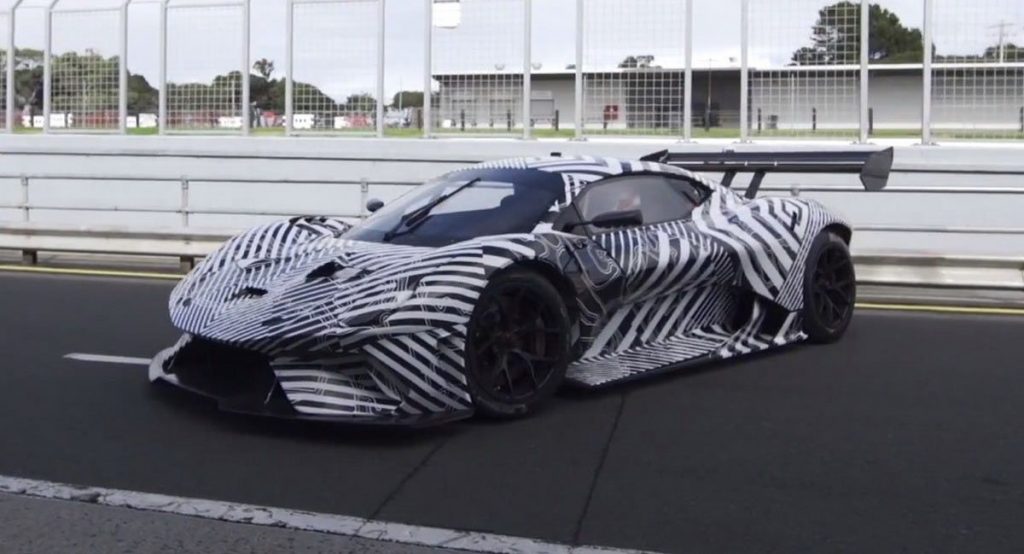Brabham Automotive took the newly-revealed BT62 at the Australian Phillip Morris Island track for some high-speed testing at the hands of the company’s Managing Director and multiple Le Mans winner, David Brabham.
Brabham Automotive’s first car was revealed earlier this month in London as a track-only hypercar, featuring an extreme aero agenda that helps produce more than 1,200 kg (2,645 lbs) of downforce.
Power comes from a naturally aspirated 5.4-liter V8 mounted in the middle, producing 700 hp (522 kW / 710 PS) and 492 lb-ft (666 Nm) of torque. Paired to it is a six-speed sequential transmission, because racecar. Brabham hasn’t announced any performance numbers, saying only that the BT62 tips the scales at just 972 kg (2,142 lbs) dry, which, taking into consideration the power of the engine, translates into “scary fast” in our books.
“Our intent was to produce a car which re-established the connection between vehicle and driver, without compromising performance or safety,” said David Brabham. “It had to be faster than the current breed of GT racing cars, but balance outright performance with durability. From my very first drive, it was clear that we had created something really special.”
As you would expect, things are pretty hardcore in the chassis department: the BT62 utilizes pushrod-actuated adjustable Öhlins dampers with coilover springs, as well as an adjustable motorsport traction control system. The carbon on carbon brakes are from Brembo while the competition slick tires are from Michelin.
“To give you an idea of just how fast it is, we eclipsed the official outright lap record at Phillip Island during testing – a record formerly held by an open-wheeled car,” said Paul Birch, Brabham Automotive’s Director of Technology and Engineering. “We didn’t go out to set a time, and it wasn’t officially recorded, but it demonstrates the car’s potential.”
Brabham will produce 70 examples of the BT62 at the company’s engineering and manufacturing facility in Adelaide. First deliveries are expected later this year.




